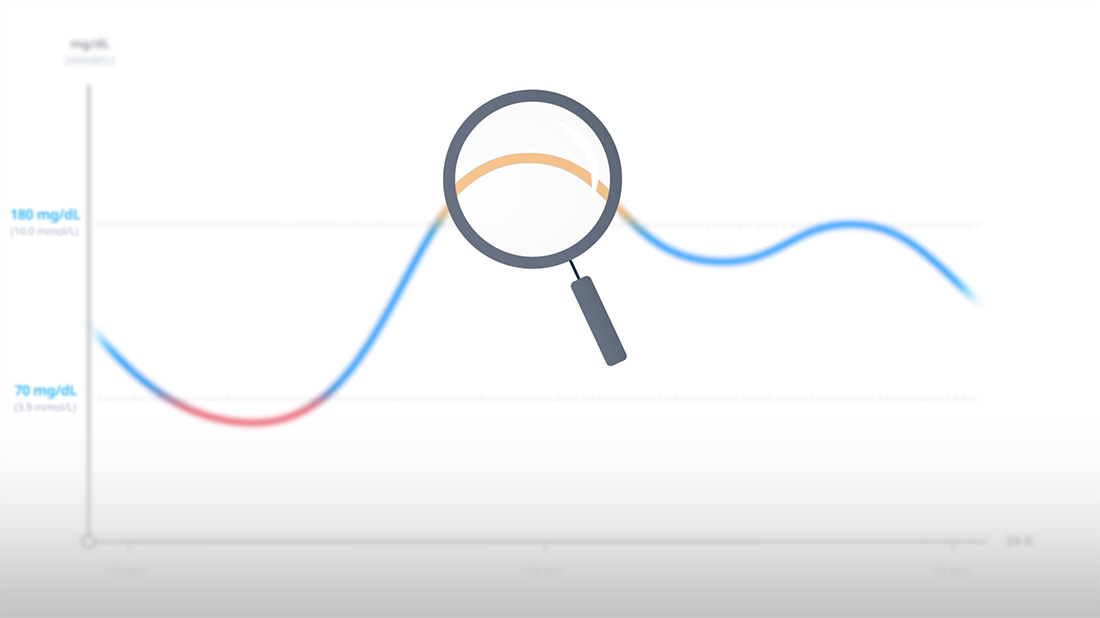An educational resource developed by Novo Nordisk with support from The diaTribe Foundation
IT'S TIME

Healthcare professionals and patients with diabetes received a fee from Novo Nordisk Inc. for their participation.
WHAT IS TIME IN RANGE (TIR)?
TIR expresses the percentage of time a person with diabetes spends within their target glucose range. It is measured by continuous glucose monitoring (CGM) and translates comprehensive data into actionable insights to help improve glycemic control.1
Hemoglobin A1C (HbA1c) remains a trusted benchmark reflecting average blood glucose levels over the past 2 to 3 months. However, assessing time in glucose ranges offers a potential deeper layer of insight. It provides a more nuanced understanding of glycemic control by capturing the highs, lows, and in-range blood glucose values that characterize daily life with diabetes.1,2
WHY TIME IN RANGE MATTERS IN GLYCEMIC CONTROL
TIR offers healthcare professionals and people with diabetes additional insights for a deeper approach to help improve glycemic control.1,3,4
Taking a closer look at the International Consensus Report and recommended guidance
Review TIR clinical guidance
Integrate TIR into clinical practice
Hear from the experts
LEARN MORE ABOUT AN ADDITIONAL MEASURE TO LOOK AT FOR GLYCEMIC CONTROL

Lasse's experience managing glucose levels using a CGM and TIR
Lasse, a real patient with diabetes, shares his experience learning to live with diabetes and how TIR has helped guide healthier decision-making.

What is TIR?
Learn more about clinical guidance and targets for TIR, Time Below Range (TBR), and Time Above Range (TAR).

Why is TIR important from a healthcare professional's perspective?
Dr Richard Bergenstal, International Diabetes Center, Minneapolis, explains why TIR is becoming a useful metric for assessing glycemic control.
- Battelino T, Danne T, Bergenstal RM, et al. Clinical Targets for Continuous Glucose Monitoring Data Interpretation: Recommendations From the International Consensus on Time in Range. Diabetes Care. 2019;42(8):1593-1603.
- Wright EE Jr, Morgan K, Fu DK, et al. Time in Range: How to Measure It, How to Report It, and Its Practical Application in Clinical Decision-Making. Diabetes Technol. 2020;38(5):439-448.
- Danne T, Nimri R, Battelino T, et al. International Consensus on Use of Continuous Glucose Monitoring. Diabetes Care. 2017;40(12):1631-1640.
- American Diabetes Association. Standards of Care in Diabetes—2023. Diabetes Care. 2023;46(suppl 1):S1-S291.